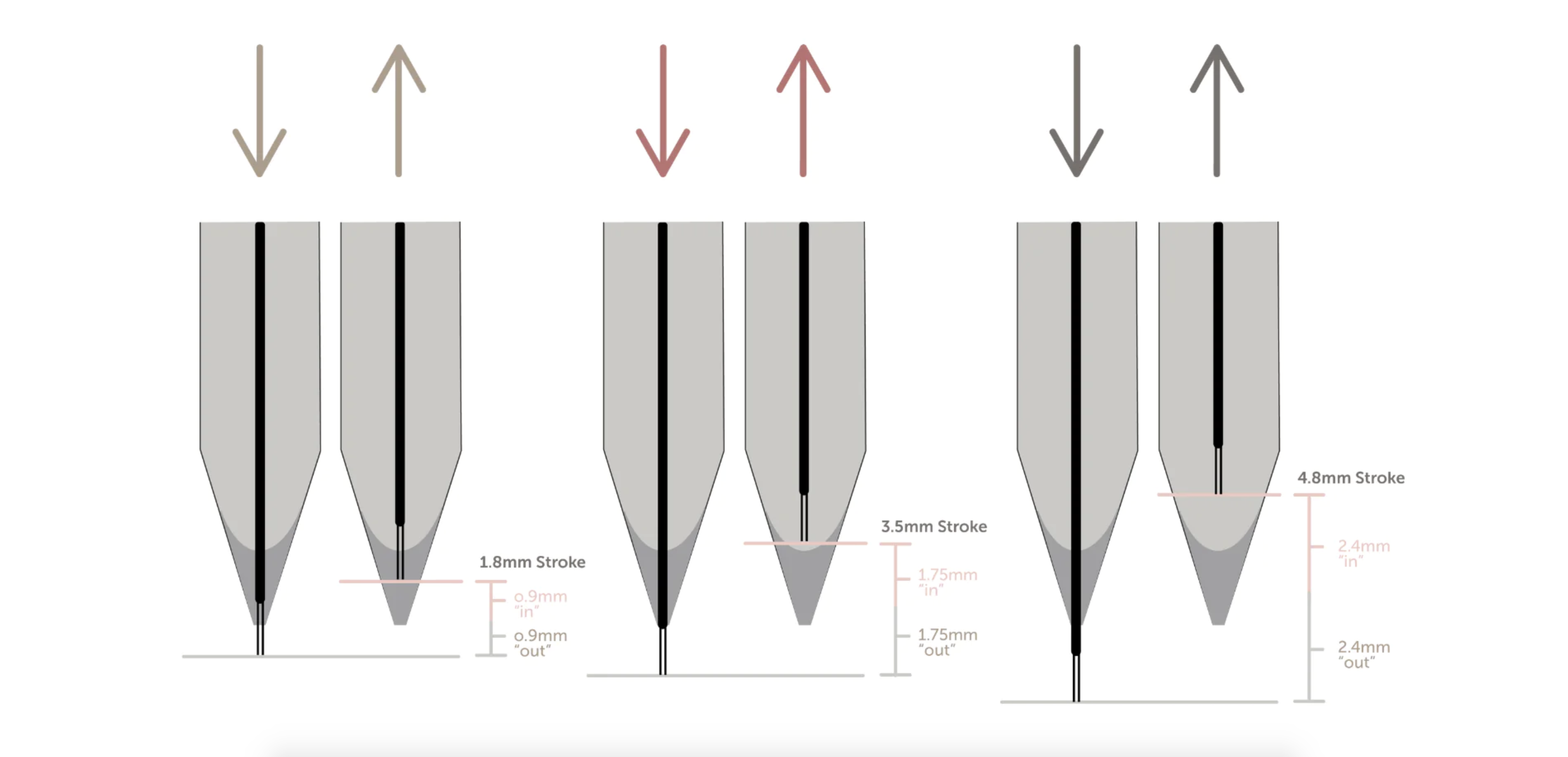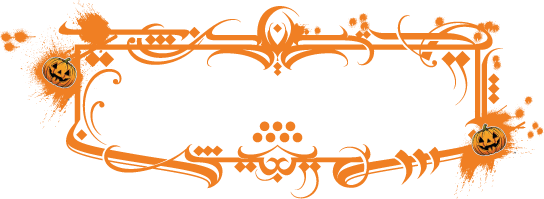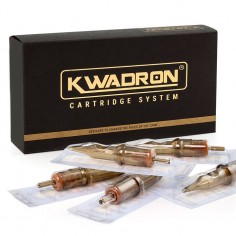
As you develop your technique, you will realize that some tattoo machines may be ideal for shading but not so much for lining. Depending on the density and type of skin, as well as the desired outcome, each machine will be more suitable for one artist or another. And most importantly, we recommend working with rotary machines that accept universal cartridges, here are a few rotary machines to take a look at.
What is the stroke of a rotary tattoo machine?
When buying a tattoo machine, the first thing to consider is the stroke as it affects the introduction of pigment into the skin and the final result.
The stroke of a tattoo machine is the distance the bar travels from its most vertical position to its lowest position.
In rotary machines, this refers to the amount of travel required for one rotation. The further the bearing is from the center of the cam, the greater the stroke. There is the short stroke (1.8mm - 2.5mm), the medium stroke (3.0mm - 3.5mm), and the long stroke (4.0mm and more).

Different machine strokes. Image courtesy of Jasmine Diebelius.
Why is the stroke of the machine important?
The stroke of the machine determines:
- The force with which the tattoo machine hits: A longer stroke gives the needle more momentum and power because the needle travels a greater distance in each upward and downward movement. This allows the needle (especially larger needle groupings) to penetrate the skin more easily. However, increased power causes more damage to the skin. Hence, short or medium stroke machines are more popular for working on more delicate areas of the body.
- The speed at which the needle moves: The speed at which the needle enters and exits the tip. If your machine has a stronger stroke (longer stroke), this leads to a decrease in needle speed.
- The maximum depth of the needle: A short stroke limits the distance the needle can protrude. The depth of the needle must be short enough for it to reach the ink inside the cartridge tube with each upward and downward movement.
A short stroke (1.8mm - 2.5mm), recommended for use in PMU, is good for applying a soft color to the skin but may not be the best option for tougher or more resistant skin types. The technique of gentle shading tattoos usually requires several passes to create ink layers. The softer stroke allows for smooth and layered blends without damaging the skin.
You can use machines such as: FK Irons EXO Pen RCA Bolt, Cheyenne Hawk Spirit, among others, for lining or shading more densely. However, you may need several passes, and if you leave the needle hanging for too long, it will not retract fully into the cartridge tube with each cycle. This prevents the needle from picking up ink, making it almost impossible to achieve a solid line in a single pass. Additionally, a line requires the needle to hang further for improved accuracy, which is more uncomfortable with a short stroke machine, as this causes ink "puddles" on the skin.
A medium stroke (3.0 mm - 3.5 mm) is best for coloring and blending. A medium stroke also has enough power for large needle groupings, which can speed up working time, and is also more suitable for tougher skin types than short-stroke machines. It is a great choice for many clients as it is neither too soft nor too strong for the skin. For medium stroke machines, we recommend: Bishop Rotary Shader,
A long stroke (from 4.0 mm) is ideal for all skin types as it absorbs ink with forceful strokes. Keep in mind that you should apply light pressure with your hand, as applying too much force can introduce too much ink (and therefore color) and damage the skin. A longer stroke can move large needle configurations on the skin with ease and allows the needle to protrude further from the tip, providing greater precision when tracing a line.
For this type of stroke, the machines that work best are: Bishop Rotary Liner, Sol Nova Unlimited, Fk Irons Exo Pen RCA Bolt, FK Irons Spektra Flux Max, among others.
Variable Stroke Rotary Machines
In addition to machines specific to each stroke, there are machines that have what is called a variable stroke, meaning that a single machine allows you to adjust the stroke according to the design's needs. The variable stroke machines we recommend are: Vlad Blad Avenger Pro, Ez P3 Pro Wireless, among others.
Best-Sellers Products
What is the voltage of a tattoo machine?
Voltage is the speed of the machine, and the voltage range is how fast or slow the machine goes.
The speed of the machine determines how often the needle penetrates the skin to implant the ink, creating dots like "pixels." This is not the same as hand speed, which determines the distance between those "pixels."
If the machine speed is slow, for example 4-7V, the needle will not penetrate the skin as frequently. You can use a slower setting to deposit less color for shading.
And if, on the other hand, your machine speed is faster, the needle will enter the skin more frequently, creating a more solid look with ease, but keep in mind that the final result will depend on the machine speed combined with hand speed.
If the desired effect is a light shading, with more space between dots, you would need to combine a slow machine speed with a slightly faster hand speed, creating a more extended stippling effect.
If you want to achieve a more solid stippling look, you need to combine a higher machine speed with a slower hand speed to allow the needle to provide more color to the skin, creating a more compact stippling effect.
The perfect combination of hand speed and machine speed is key to achieving the desired effects on the skin with any needle configuration.
That's why it's very important to practice hand speed with different machine speed settings on synthetic skin and understand the patterns that work best for each artist.
If you notice a "tear" effect on synthetic skin, it means that your hand speed is either too slow or too fast for the machine speed, causing damage to the skin.
If you prefer to work more slowly, you should choose machines, or alternatively power supplies, that allow for a slower voltage.
If your technique adapts to a fast machine speed, then you have to opt for a higher voltage.
 Cookie preferences
Cookie preferences
















